A Novel SIW Leaky-Wave Antenna for Continuous Beam Scanning from Backward to Forward
Abstract
:1. Introduction
2. Antenna Design
2.1. Unit Cell in Ideal Waveguide
2.2. Unit Cell in Ideal Waveguide
2.3. Full Structure Array Antenna
3. Experimental Verifications
4. Conclusions
Author Contributions
Funding
Institutional Review Board Statement
Informed Consent Statement
Data Availability Statement
Conflicts of Interest
References
- Ströber, T.; Tubau, S.; Girard, E.; Legay, H.; Goussetis, G.; Ettorre, M. Shaped Parallel-Plate Lens for Mechanical Wide-Angle Beam Steering. IEEE Trans. Antennas Propag. 2021, 69, 8158–8169. [Google Scholar] [CrossRef]
- Johnson, A.D.; Zhong, J.; Venkatakrishnan, S.B.; Alwan, E.A.; Volakis, J.L. Phased Array with Low-Angle Scanning and 46:1 Bandwidth. IEEE Trans. Antennas Propag. 2020, 68, 7833–7841. [Google Scholar] [CrossRef]
- Shirkolaei, M.M.; Ghalibafan, J. Scannable Leaky-Wave Antenna Based on Ferrite-Blade Waveguide Operated below the Cutoff Frequency. IEEE Trans. Magn. 2021, 57, 2800510. [Google Scholar]
- Shirkolaei, M.M.; Kashani, F.H.; Ghalibafan, J. Backfire-to-endfire scanning capability of a balanced metamaterial structure based on slotted ferrite-filled waveguide. Waves Random Complex Media 2019, 31, 1211–1225. [Google Scholar]
- Ettorre, M.; Sauleau, R.; le Coq, L.; Bodereau, F. Single-folded leakywave antennas for automotive radars at 77GHz. IEEE Antennas Wirel. Propag. Lett. 2010, 9, 859–862. [Google Scholar] [CrossRef]
- Yang, S.T.; Ling, H. Application of a microstrip leaky wave antenna for range–azimuth tracking of humans. IEEE Geosci. Remote Sens. Lett. 2013, 10, 1384–1388. [Google Scholar] [CrossRef]
- Abielmona, S.; Nguyen, H.V.; Caloz, C. Analog direction of arrival estimation using an electronically-scanned CRLH leaky-wave antenna. IEEE Trans. Antennas Propag. 2011, 59, 1408–1412. [Google Scholar] [CrossRef]
- Gupta, S.; Abielmona, S.; Caloz, C. Microwave analog real-time spectrum analyzer (RTSA) based on the spectral-spatial decomposition property of leaky-wave structures. IEEE Trans. Microw. Theory Tech. 2009, 57, 2989–2999. [Google Scholar] [CrossRef]
- Heddebaut, M. Leaky waveguide for train-to-wayside communicationbased train control. IEEE Trans. Veh. Technol. 2009, 58, 1068–1076. [Google Scholar] [CrossRef] [Green Version]
- Oliner, A.A. Leakage from higher modes on microstrip line with application to antennas. Radio Sci. 1987, 22, 907–912. [Google Scholar] [CrossRef]
- Shaw, R.; Mandal, M.K. Dual-beam periodic leaky wave antenna with broadside radiation. In Proceedings of the Asia-Pacific Microwave Conference, New Delhi, India, 5–9 December 2016; pp. 1–4. [Google Scholar]
- Menzel, W. A new travelling-wave antenna in microstrip. Arch. Elek Ubertragung. 1979, 33, 137–140. [Google Scholar]
- Mondal, P.; Wu, K. A leaky-wave antenna in substrate integrated nonradiative dielectric (SINRD) waveguide with controllable scanning rate. IEEE Trans. Antennas Propag. 2013, 61, 2294–2297. [Google Scholar] [CrossRef]
- Shaw, R.; Khan, A.A.; Mandal, M.K. Dual-beam substrate integrated waveguide periodic leaky-wave antenna. In Proceedings of the International Conference on Microwave and Photonics, Dhanbad, India, 11–13 December 2015; pp. 1–2. [Google Scholar]
- Goldstone, L.O.; Oliner, A.A. Leaky-wave antennas—Part I: Rectangular waveguides. IRE Trans. Antennas Propag. 1959, AP-7, 307–319. [Google Scholar] [CrossRef]
- Xu, J.; Hong, W.; Tang, H.; Kuai, Z.; Wu, K. Half-mode substrate integrated waveguide (HMSIW) leaky-wave antenna for millimeter-wave applications. IEEE Antennas Wireless Propag. Lett. 2008, 7, 85–88. [Google Scholar]
- Cheng, Y.J.; Hong, W.; Wu, K.; Fan, Y. Millimeter-wave substrate integrated waveguide long slot leaky-wave antennas and twodimensional multibeam applications. IEEE Trans. Antennas Propag. 2011, 59, 40–47. [Google Scholar] [CrossRef]
- Alibakhshikenari, M.; Andujar, A.; Anguera, J. New Compact Printed Leaky-Wave Antenna with Beam Steering. Microw. Opt. Technol. Lett. 2016, 58, 215–217. [Google Scholar] [CrossRef]
- Deslandes, D.; Wu, K. Substrate integrated waveguide leaky-wave antenna: Concept and design considerations. In Proceedings of the Asia-Pacific Microwave Conference, Suzhou, China, 4–7 December 2005; pp. 346–349. [Google Scholar]
- Liu, J.; Jackson, D.R.; Long, Y. Substrate integrated waveguide (SIW) leaky-wave antenna with transverse slots. IEEE Trans. Antennas Propag. 2012, 60, 20–29. [Google Scholar] [CrossRef]
- Liu, J.; Tang, X.; Li, Y.; Long, Y. Substrate integrated waveguide leaky-wave antenna with H-shaped slots. IEEE Trans. Antennas Propag. 2012, 60, 3962–3967. [Google Scholar] [CrossRef]
- Caloz, C.; Itoh, T. Electromagnetic Metamaterials Transmission Line Theory and Microwave Applications; Wiley: New York, NY, USA, 2005. [Google Scholar]
- Zhang, Q.; Wu, G.C.; Wang, G.M.; Liang, J.G.; Gao, X.J. Beam scanning antenna with wideband broadside radiation based on multilayered substrate integrated waveguide composite right/left-handed structure. Frequenz 2017, 71, 29–35. [Google Scholar] [CrossRef]
- Xu, F.; Wu, K.; Zhang, X. Periodic leaky-wave antenna for millimeter wave applications based on substrate integrated waveguide. IEEE Trans. Antennas Propag. 2010, 58, 340–347. [Google Scholar]
- Cheng, Y.; Hong, W.; Wu, K. Millimeter-wave half mode substrate integrated waveguide frequency scanning antenna with Quadri-polarization. IEEE Trans. Antennas Propag. 2010, 58, 1848–1855. [Google Scholar] [CrossRef]
- Williams, J.T.; Baccarelli, P.; Paulotto, S.; Jackson, D.R. 1-D Combline Leaky-Wave Antenna with the Open-Stopband Suppressed: Design Considerations and Comparisons with Measurements. IEEE Trans. Antennas Propag. 2013, 61, 4484–4492. [Google Scholar] [CrossRef]
- Otto, S.; Al-Bassam, A.; Rennings, A.; Solbach, K.; Caloz, C. Transversal Asymmetry in Periodic Leaky-Wave Antennas for Bloch Impedance and Radiation Efficiency Equalization through Broadside. IEEE Trans. Antennas Propag. 2014, 62, 5037–5054. [Google Scholar] [CrossRef]
- Alibakhshikenari, M.; Virdee, B.S.; Shukla, P.; Wang, Y.; Azpilicueta, L.; Naser-Moghadasi, M.; See, C.H.; Elfergani, I.; Zebiri, C.; Abd-Alhameed, R.A.; et al. Impedance Bandwidth Improvement of a Planar Antenna Based on Metamaterial-Inspired T-Matching Network. IEEE Access 2021, 9, 67916–67927. [Google Scholar] [CrossRef]
- Alibakhshikenari, M.; Virdee, B.S.; Shukla, P.; See, C.H.; Abd-Alhameed, R.A.; Falcone, F.; Limiti, E. Improved Adaptive Impedance Matching for RF Front-End Systems of Wireless Transceivers. Sci. Rep. 2020, 10, 14065. [Google Scholar] [CrossRef] [PubMed]
- Alibakhshikenari, M.; Virdee, B.S.; See, C.H.; Abd-Alhameed, R.A.; Falcone, F.; Limiti, E. Impedance matching network based on metasurfaces (2-D metamaterials) for electrically small antennas. In Proceedings of the IEEE International Symposium on Antennas and Propagation and North American Radio Science Meeting, Montreal, QC, Canada, 5–10 July 2020; pp. 1953–1954. [Google Scholar]
- Rahmani, M.H.; Deslandes, D. Backward to Forward Scanning Periodic Leaky-Wave Antenna with Wide Scanning Range. IEEE Trans. Antennas Propag. 2017, 65, 3326–3335. [Google Scholar] [CrossRef]
- Mallahzadeh, A.; Mohammad-Ali-Nezhad, S. Periodic Collinear-Slotted Leaky Wave Antenna with Open Stopband Elimination. IEEE Trans. Antennas Propag. 2015, 63, 5512–5521. [Google Scholar] [CrossRef] [Green Version]
- Ranjan, R.; Jayanta, G. SIW-based leaky-wave antenna supporting wide range of beam scanning through broadside. IEEE Antennas Wirel. Propag. Lett. 2019, 18, 606–610. [Google Scholar] [CrossRef]
- Marcuvitz, N. Waveguide Handbook; Peter Peregrinus: London, UK, 1986. [Google Scholar]
- Weisshaar, A.; Mongiardo, M.; Tripathi, V.K. CAD-oriented equivalent circuit modeling of step discontinuities in rectangular waveguides. IEEE Microw. Guided Wave Lett. 1996, 6, 171–173. [Google Scholar] [CrossRef]
- Marcuvitz, N. Waveguide Handbook; McGraw-Hill: New York, NY, USA, 1951. [Google Scholar]
- Chen, X.; Wu, K. Substrate Integrated Waveguide Filter: Basic Design Rules and Fundamental Structure Features. IEEE Microw. Mag. 2014, 15, 108–116. [Google Scholar] [CrossRef]
- Lyu, Y.L.; Liu, X.-X.; Wang, P.-Y.; Erni, D.; Wu, Q.; Wang, C.; Kim, N.-Y.; Meng, F.-Y. Leaky-wave antennas based on noncutoff substrate integrated waveguide supporting beam scanning from backward to forward. IEEE Trans. Antennas Pxropag. 2016, 64, 2155–2164. [Google Scholar] [CrossRef]
- Kordiboroujeni, Z.; Bornemann, J. New wideband transition from microstrip line to substrate integrated waveguide. IEEE Trans. Microw. Theory Tech. 2014, 62, 2983–2989. [Google Scholar] [CrossRef]
- Zhou, W.; Liu, J.; Long, Y. Investigation of Shorting Vias for Suppressing the Open Stopband in an SIW Periodic Leaky-Wave Structure. IEEE Trans. Microw. Theory Tech. 2018, 66, 2936–2945. [Google Scholar] [CrossRef]




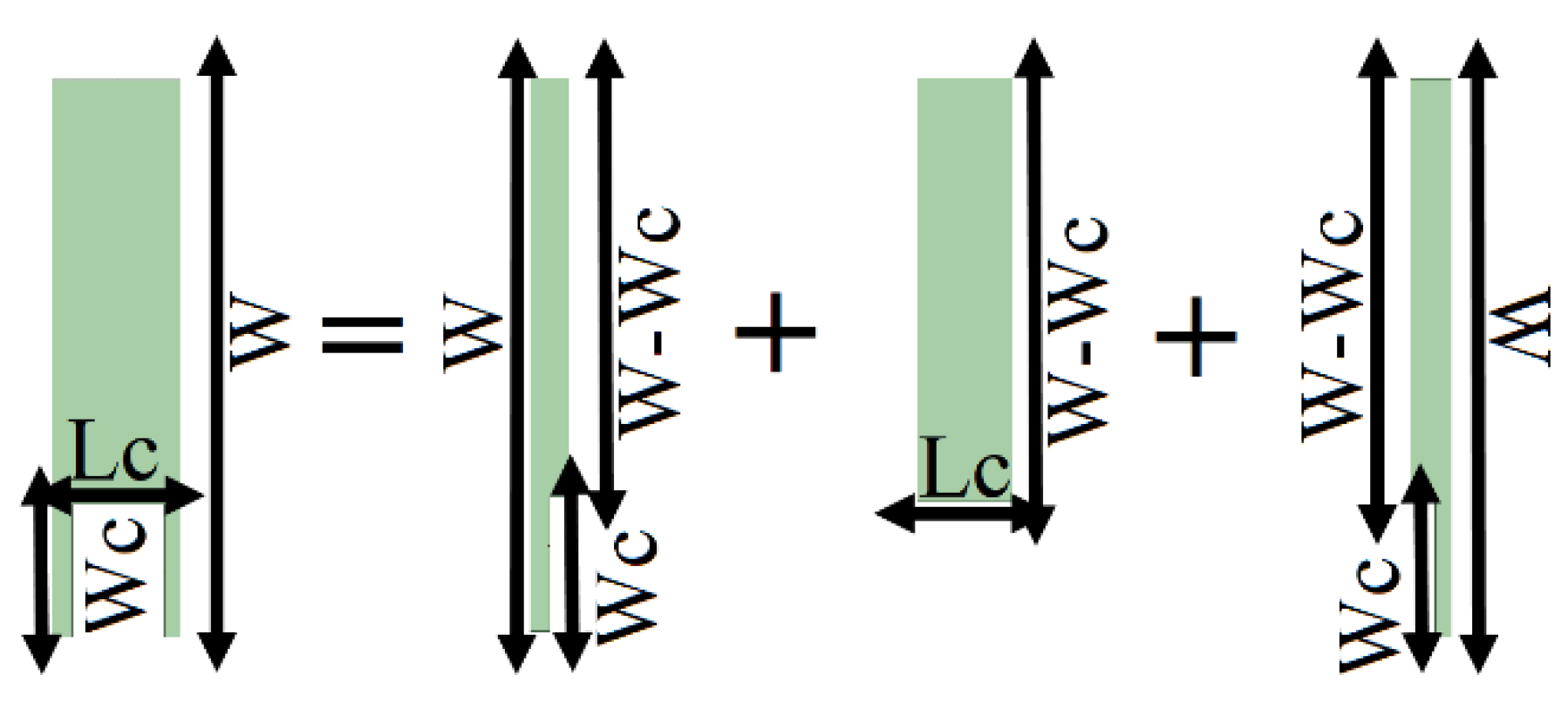
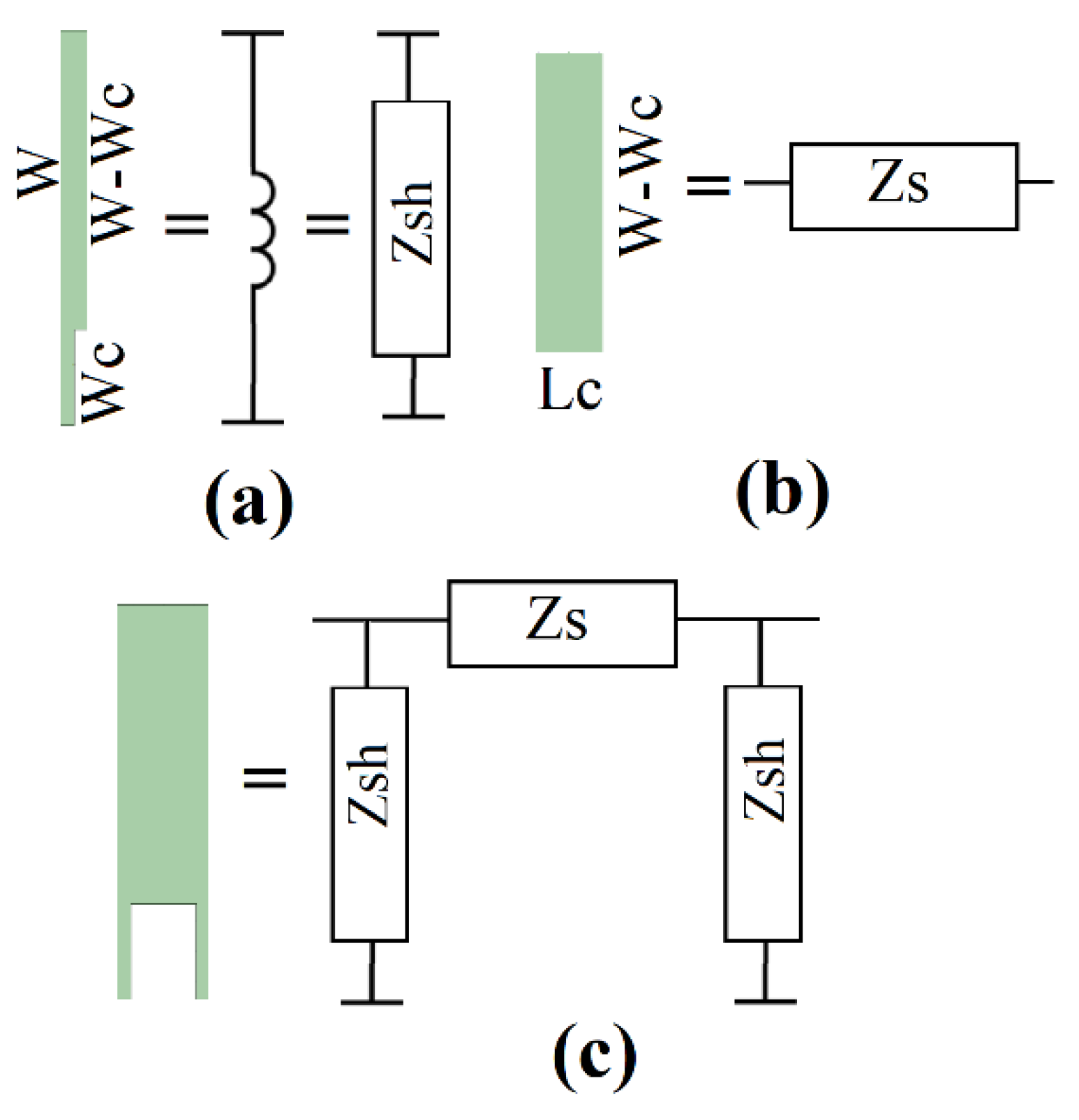

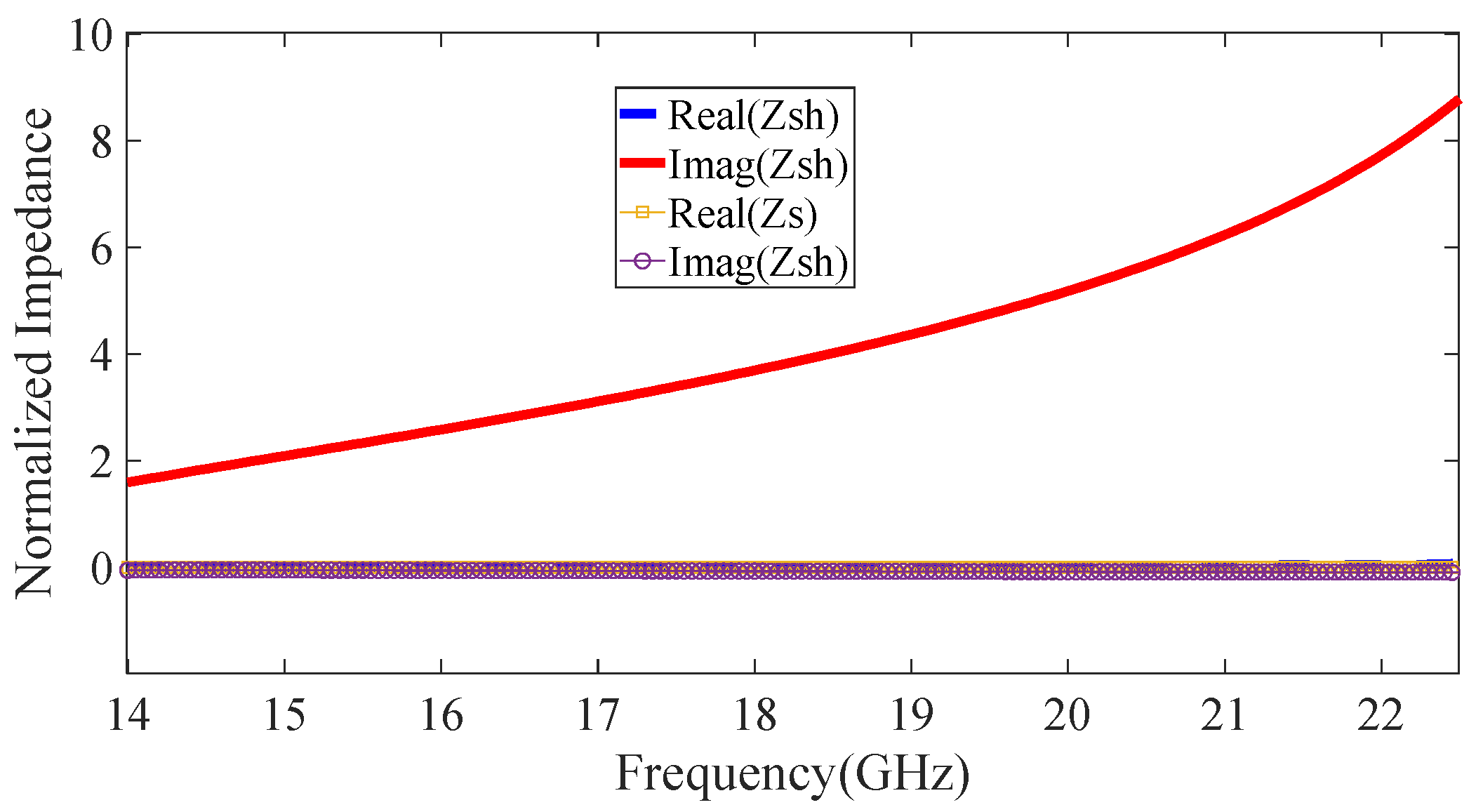
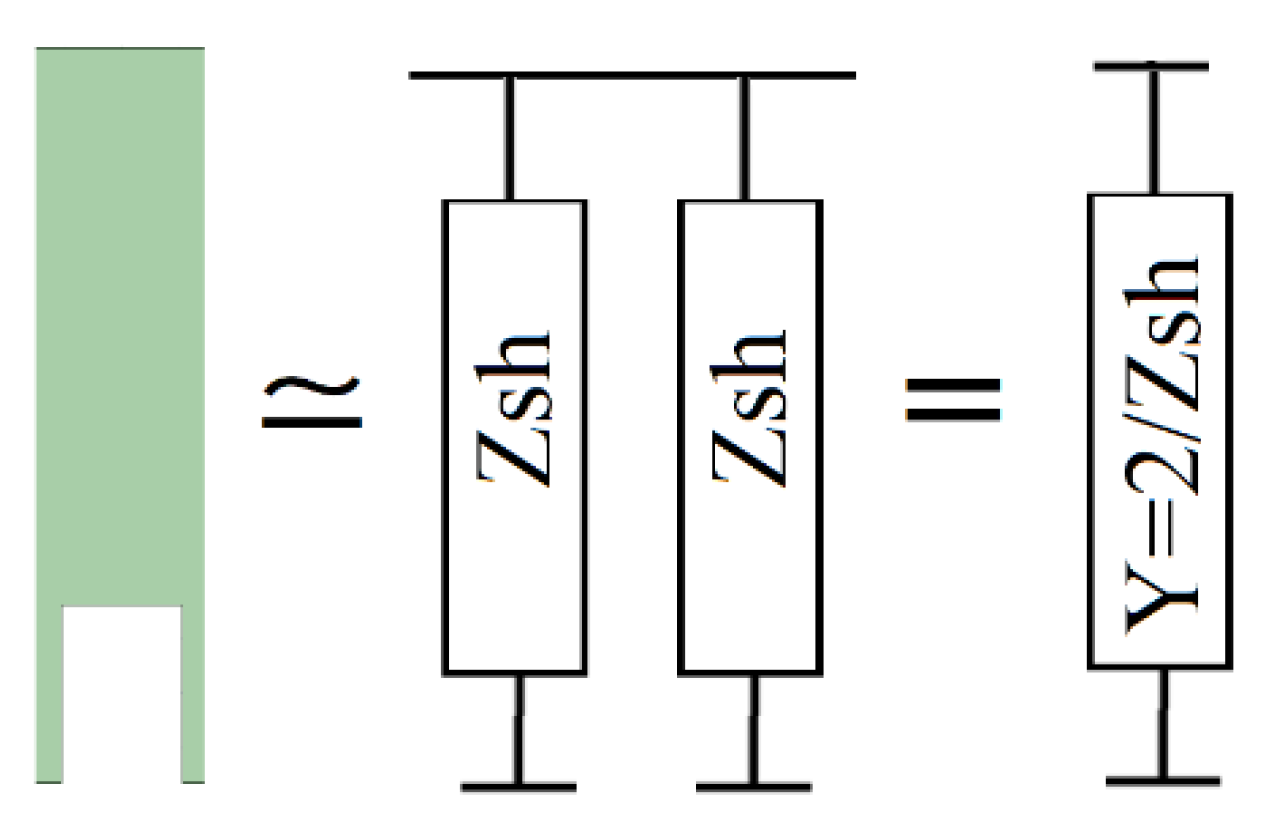


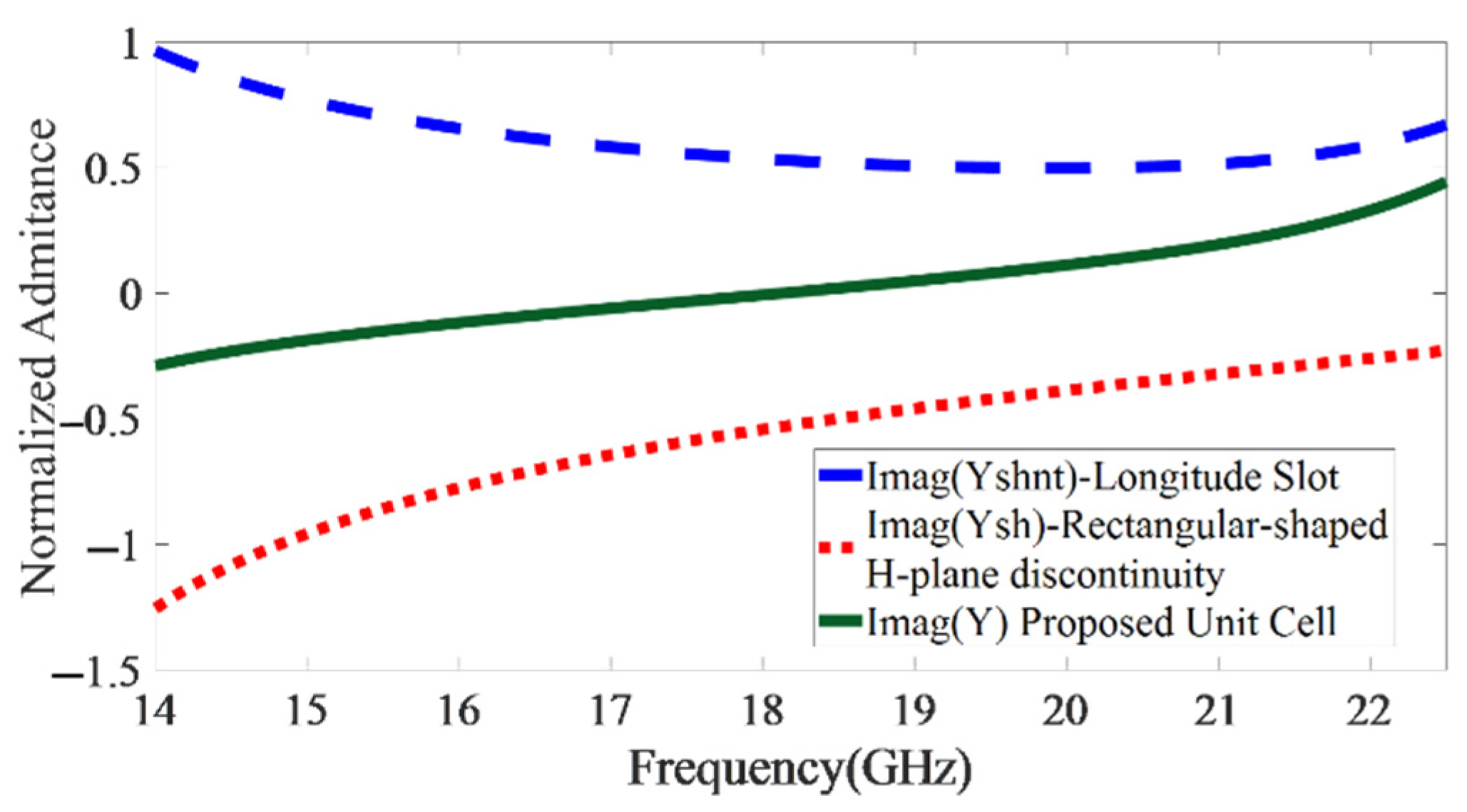
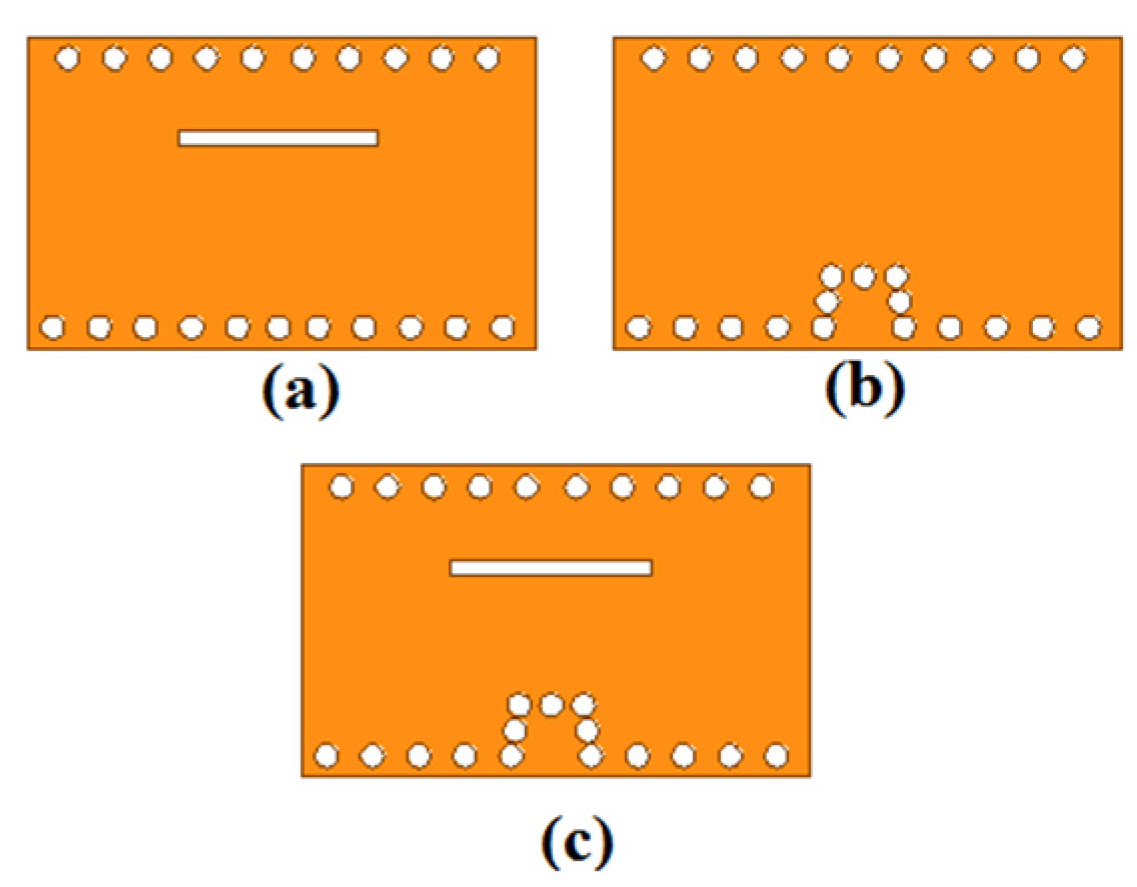
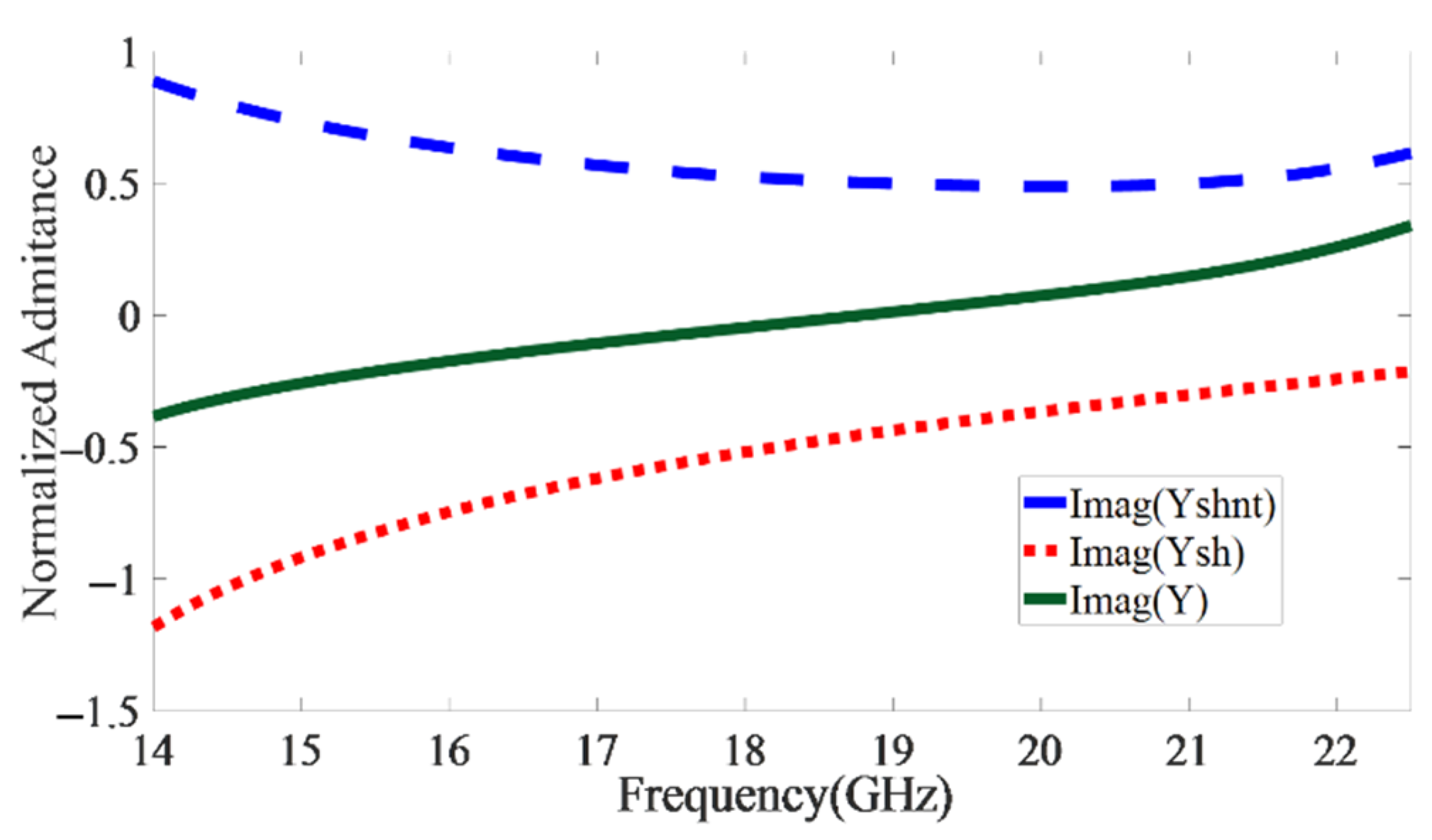
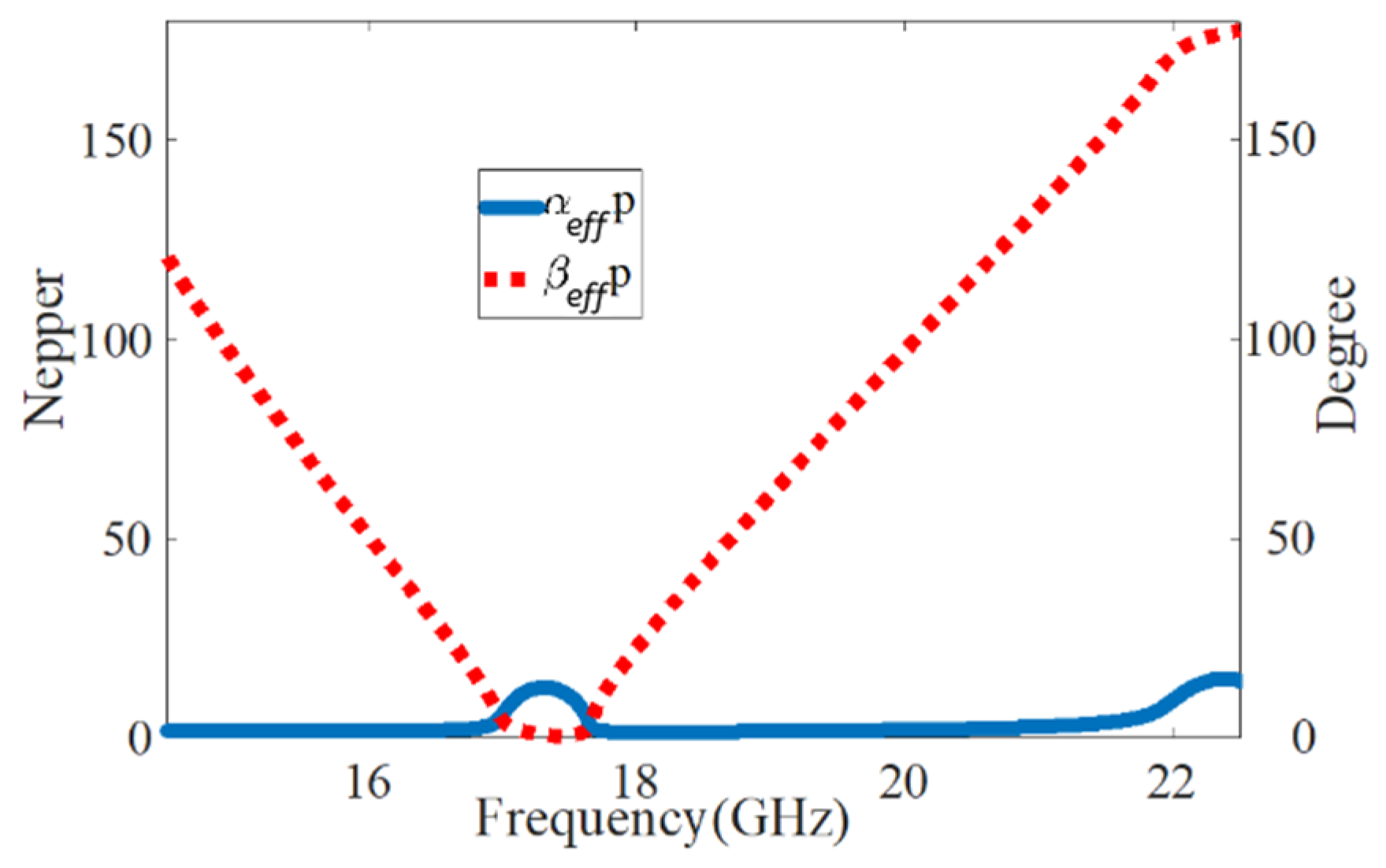






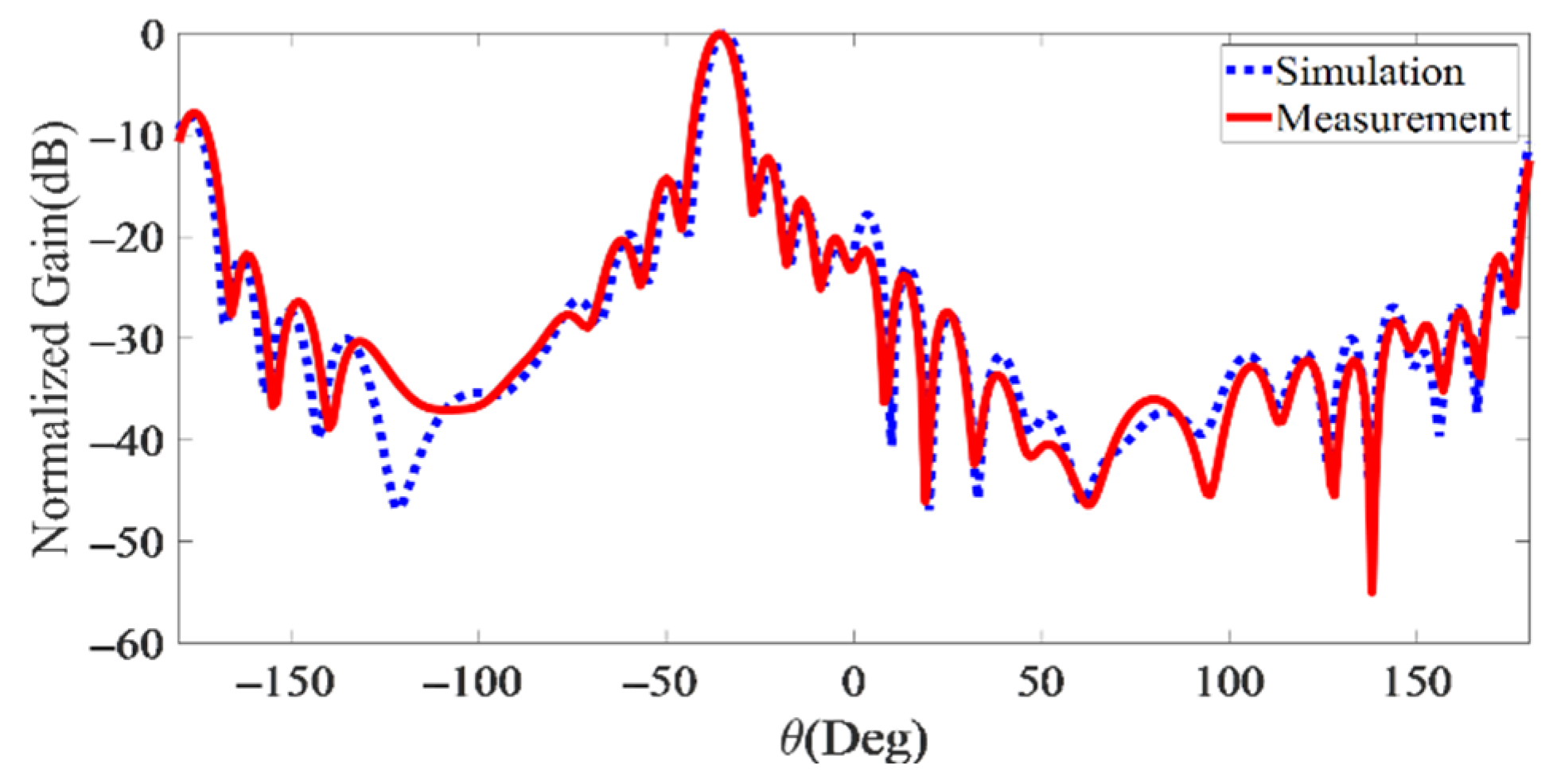
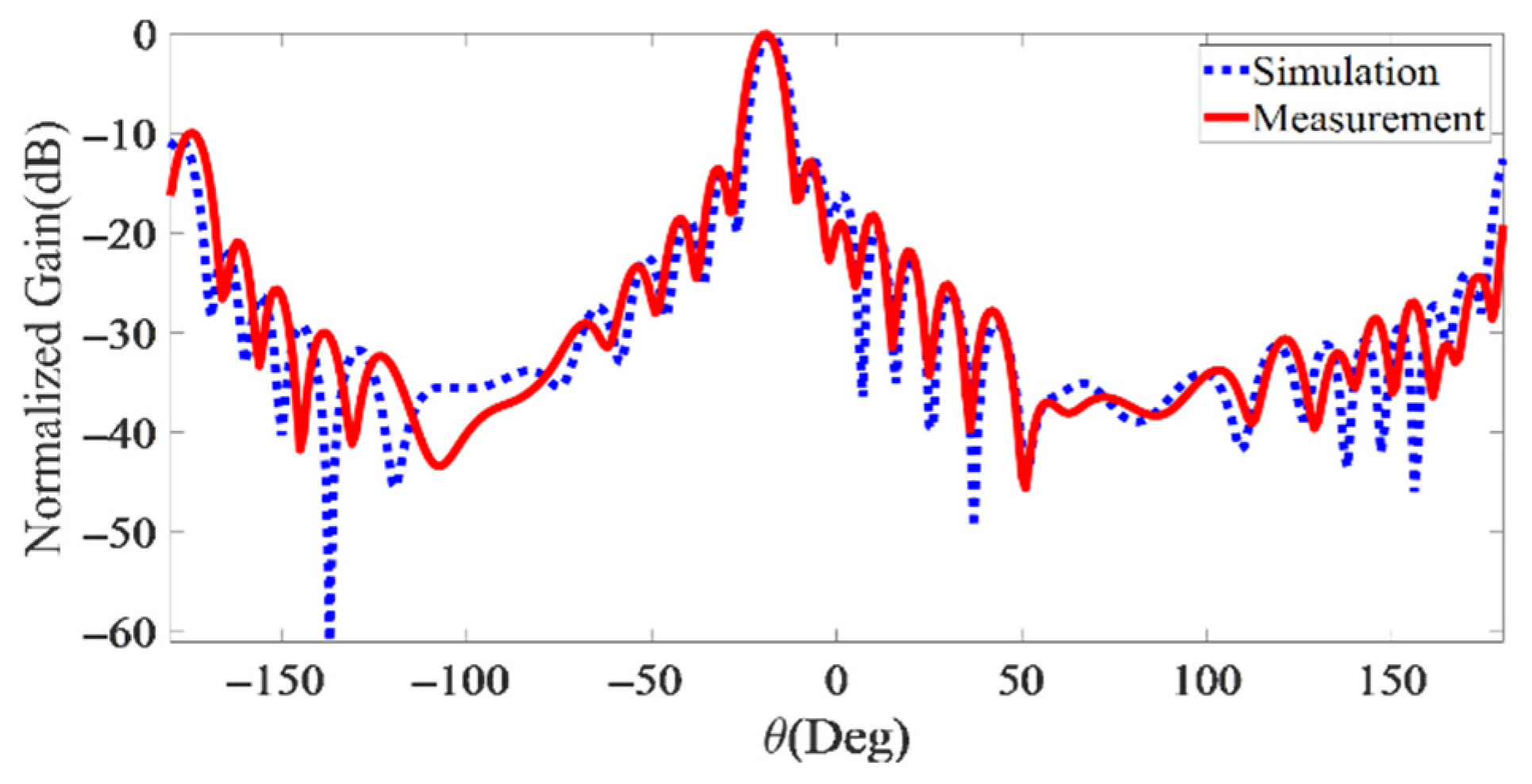
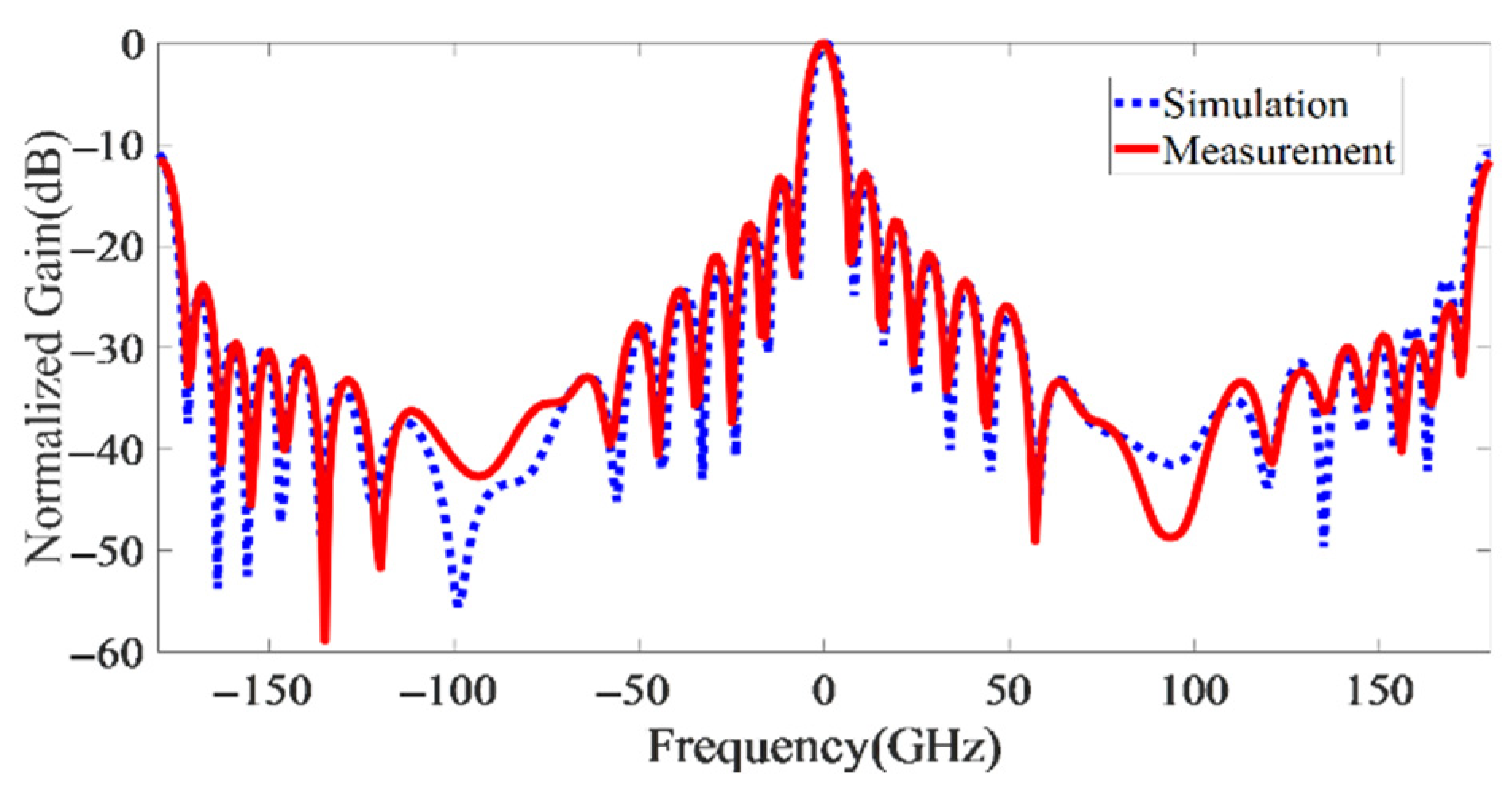
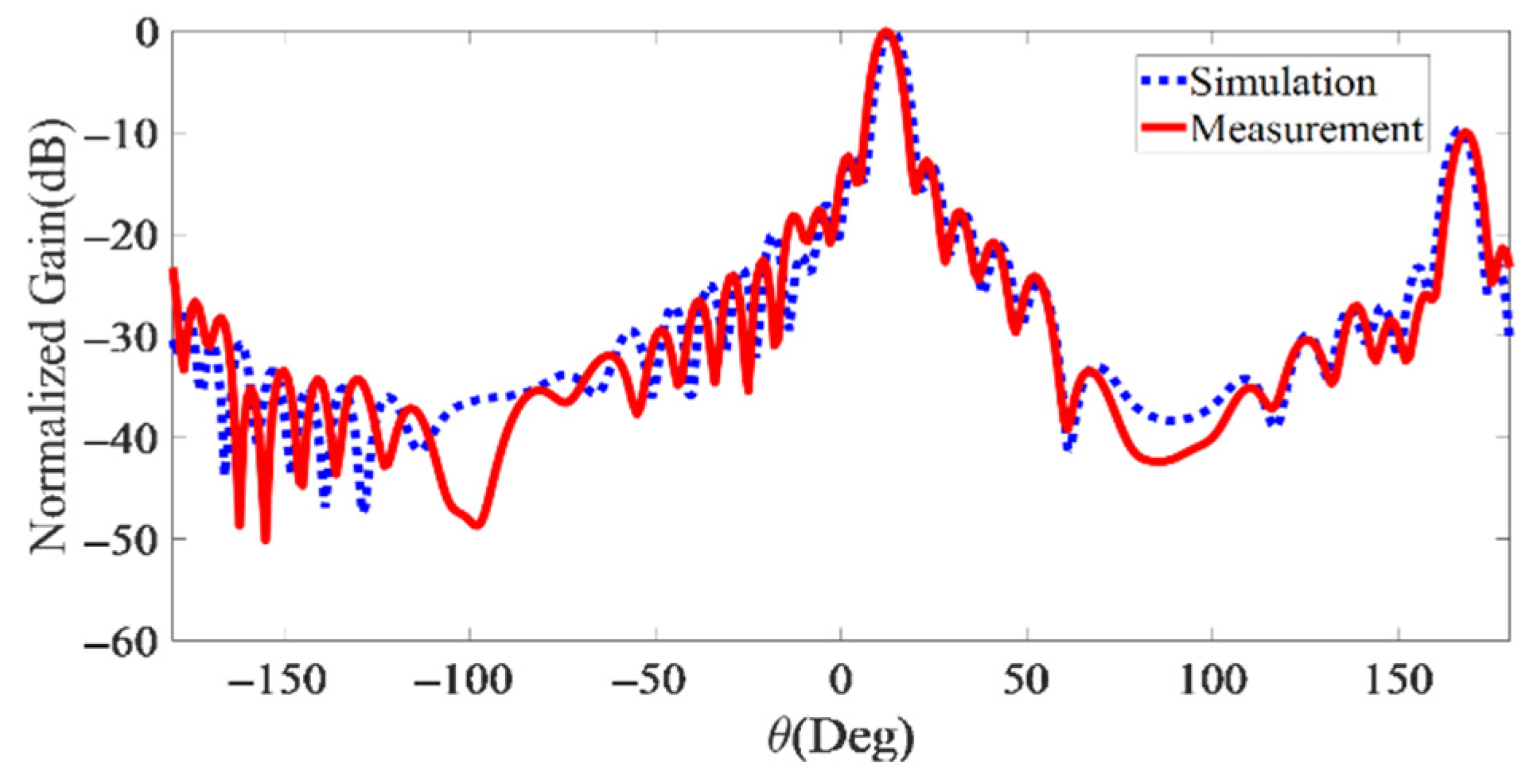
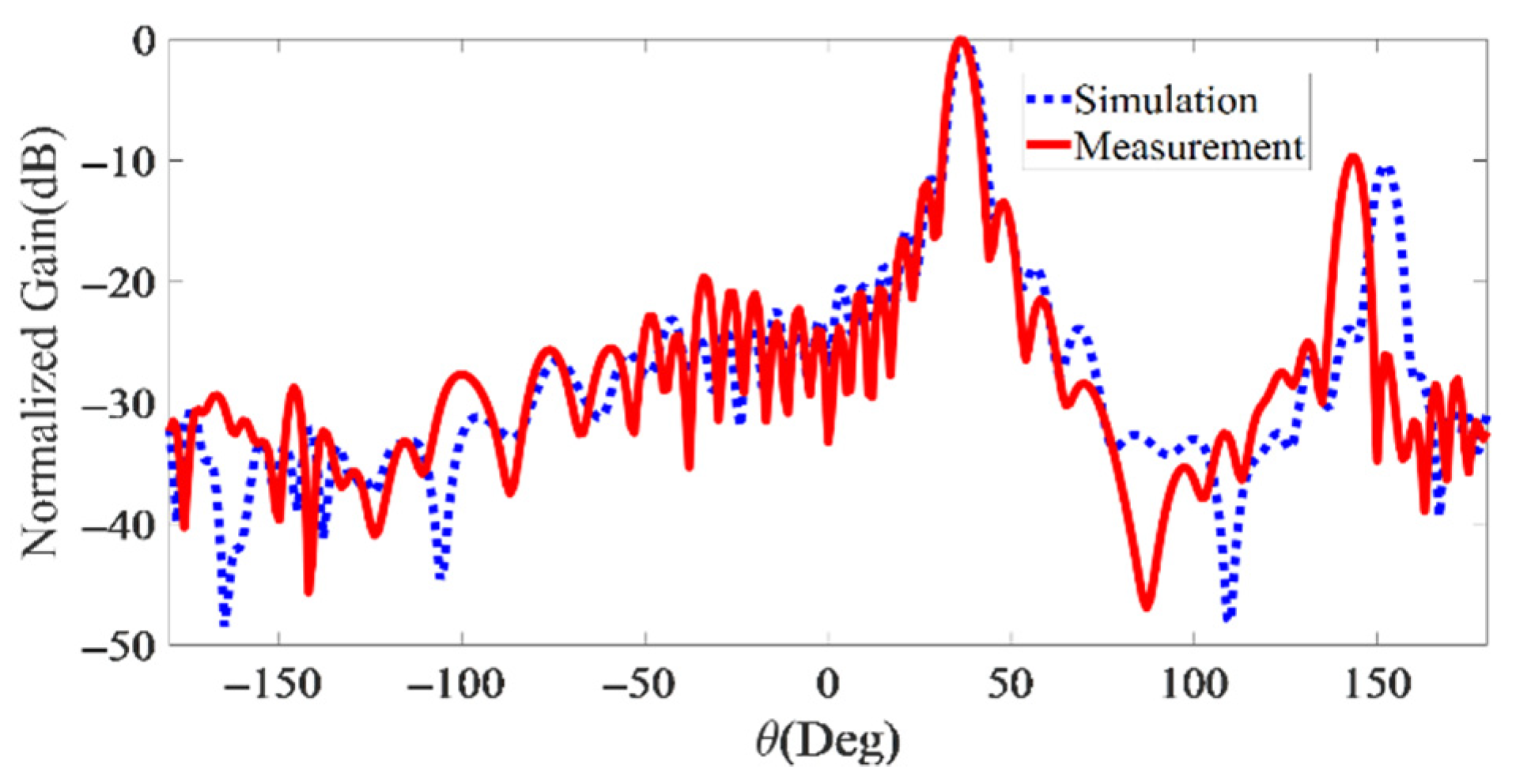
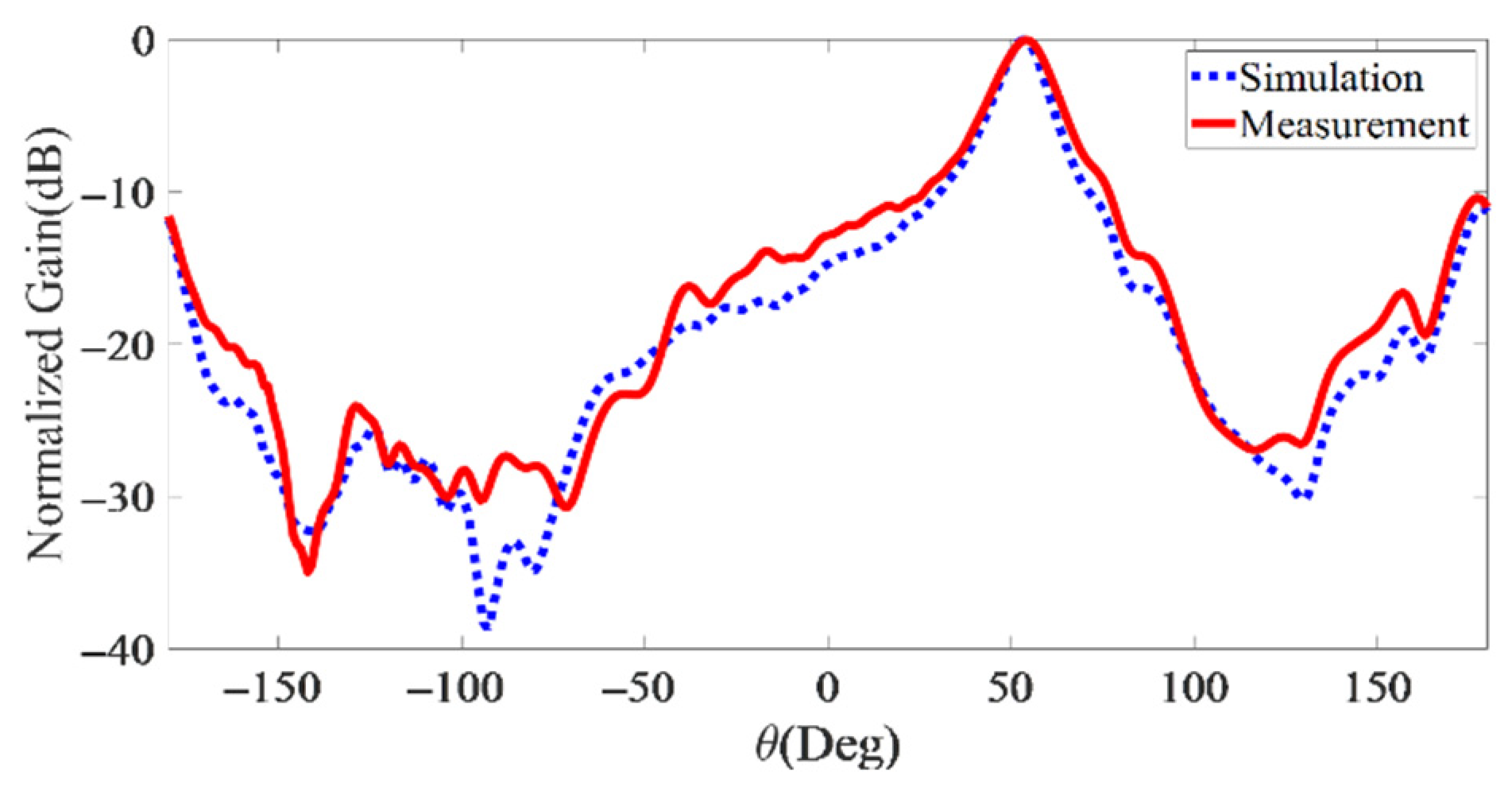

| Parameter | Value (mm) | Parameter | Value (mm) |
|---|---|---|---|
| W | 6.9 | Lc | 1.15 |
| Lofs | 2 | Wc | 1.15 |
| Rd | 0.3 | Ls | 5.2 |
| S | 1.2 | Ws | 0.4 |
| p | 12.8 |
| Ref | Slot Type | εr | Total Length (λ0) | Band Width (%) | Operating Band Width (GHz) | Scanning Range (deg) | Max Gain (dBi) | Efficiency (%) |
|---|---|---|---|---|---|---|---|---|
| [30] | Longitudinal | 6.15 | 7.6 | 37 | 20–29 | −50 to 45 | 12.2 | - |
| [32] | Longitudinal | 3.55 | - | 40 | 8–12 | −35 to 35 | 12.5 | 91 |
| [33] | Longitudinal | 3.66 | 6 | 55 | 10–17.5 | −49 to 69 | 14.2 | 68 |
| [38] | Transverse and Longitudinal | 3.66 | 6 | 43 | 9–14 | −40 to 35 | 12 | - |
| [40] | Transverse | 10.2 | 11.2 | 16 | 13.2–15.6 | −61 to 42 | 14.1 | - |
| Proposed | Longitudinal | 3.55 | 6.7 | 43 | 14.5–22.5 | −60 to 57.5 | 16 | 82 |
Publisher’s Note: MDPI stays neutral with regard to jurisdictional claims in published maps and institutional affiliations. |
© 2022 by the authors. Licensee MDPI, Basel, Switzerland. This article is an open access article distributed under the terms and conditions of the Creative Commons Attribution (CC BY) license (https://creativecommons.org/licenses/by/4.0/).
Share and Cite
Kamalzadeh, S.; Soleimani, M. A Novel SIW Leaky-Wave Antenna for Continuous Beam Scanning from Backward to Forward. Electronics 2022, 11, 1804. https://doi.org/10.3390/electronics11121804
Kamalzadeh S, Soleimani M. A Novel SIW Leaky-Wave Antenna for Continuous Beam Scanning from Backward to Forward. Electronics. 2022; 11(12):1804. https://doi.org/10.3390/electronics11121804
Chicago/Turabian StyleKamalzadeh, Saeed, and Mohammad Soleimani. 2022. "A Novel SIW Leaky-Wave Antenna for Continuous Beam Scanning from Backward to Forward" Electronics 11, no. 12: 1804. https://doi.org/10.3390/electronics11121804
APA StyleKamalzadeh, S., & Soleimani, M. (2022). A Novel SIW Leaky-Wave Antenna for Continuous Beam Scanning from Backward to Forward. Electronics, 11(12), 1804. https://doi.org/10.3390/electronics11121804





